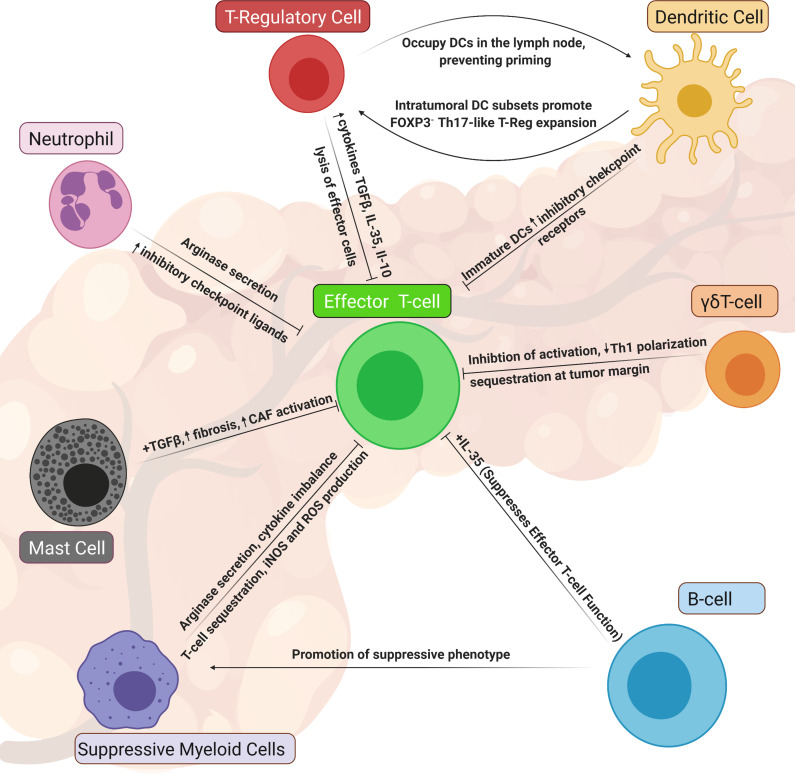Figure 2.
Dismal T-cell responses observed in pancreatic cancer can be attributed, in part, to a multitude of inflammatory monocytes and suppressive lymphocytes within the tumor microenvironment of pancreatic tumors. Here, we highlight populations of immune suppressive cells in PDAC that have been understudied yet have been shown to directly and indirectly suppress effector T cells in PDAC. notably, many of the mechanisms highlighted here involve soluble mediators, such as chemokines, cytokines, growth factors and reactive nitrogen species and ROS. These cellular populations should be more commonly considered as we seek to develop novel therapeutic strategies to reinvigorate T-cell activity in PDAC. DC, dendritic cell; IL, interleukin; PDAC, pancreatic ductal adenocarcinoma; ROS, reactive oxygen species; TGFβ, transforming growth factor beta; cancer associated fibroblast, CAF; inducible Nitrous Oxide Synthase iNOS; myeloid-derived suppressor cell, MDSC.

